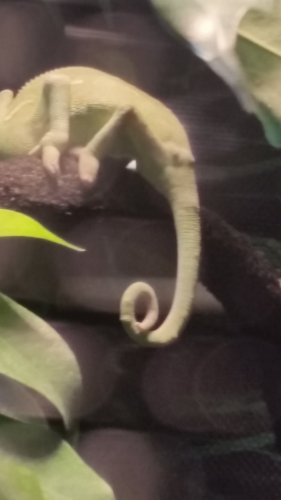Navigation
Install the app
How to install the app on iOS
Follow along with the video below to see how to install our site as a web app on your home screen.
Note: This feature may not be available in some browsers.
More options
You are using an out of date browser. It may not display this or other websites correctly.
You should upgrade or use an alternative browser.
You should upgrade or use an alternative browser.
Bumps on cham
- Thread starter SmokeJoker
- Start date
JGuinan007
Avid Member
I really have no idea but really want to know is the tail broken? The front foot wrist looks like MBD but that may just be the pic. Perhaps you could post more pics?
maryanne27
Avid Member
Looks like it might be gout in the ankle. I think it needs to see a vet ASAP.
second that! I've seen ankles like that accompanied by other small bumps... after thinking it was/treating for infection for a while we figured it was gout and it was too late. Vet and labs are the way to go. Good luck
SmokeJoker
Member
I took him to the vet about a week ago and the vet said it was an infection so we've been treating for that. I was at work so I don't have any other picture right now but I will get some tomorow. I will definitely get him to the vet again as soon as I can.
SmokeJoker
Member
Thank you for all the help. Just wondering if gout it deadly to reptiles or if we can treat it and he'll be fine after that.
KLowery88
Avid Member
Gout is usually a symptom of something else unfortunately. I had a rescue Veiled that was suffering from it, and it was caused by kidney failure most likely brought on by dehydration.
When I was discussing treatment options with my vet, he said it was a very hard treatment process. Monty was too far gone to make treatment anything more than prolonging his suffering, but every case is different. Its something you'll have to discuss with your vet.
When I was discussing treatment options with my vet, he said it was a very hard treatment process. Monty was too far gone to make treatment anything more than prolonging his suffering, but every case is different. Its something you'll have to discuss with your vet.
jajeanpierre
Chameleon Enthusiast
If it's an infection it needs to have the pus removed and a culture and sensitivity test done to determine the best medication to treat it with. Pus in chameleons is like cottage cheese and antibiotics won't penetrate it.
Why would you do a culture and sensitivity test on a chameleon? In general, they aren't done on people except in a few cases such as when dealing with something really serious like a bone infection. There are broad spectrum antibiotics which treat a broad spectrum of nasties. If one doesn't work, there is usually another broad spectrum antibiotic that treats a different group of nasties.
I've had chameleons with abscesses that the vet only wanted to lance and clean out if they changed. If the vet felt the animal had walled off the infection, we just left it.
You're right...culture and sensitivity tests aren't usually done on people....but unlike people, chameleons don't wait long enough for you to test out one antibiotic and then if it doesn't work try another.
You are also right that sometimes chameleons wall off infection....but sometimes they don't/can't.
My vet's have always done culture and sensitivity tests...and while waiting for the results, put them on a broad spectrum antibiotic. Most bacteria found in chameleons are gram negative and opportunistic.
Here's an article that also agrees with culture and sensitivity tests...
http://seavs.com/reptiles/lizards/chameleons/
You will see that he says..."the window for treatment and resolution may be short"...as I indicated.
You are also right that sometimes chameleons wall off infection....but sometimes they don't/can't.
My vet's have always done culture and sensitivity tests...and while waiting for the results, put them on a broad spectrum antibiotic. Most bacteria found in chameleons are gram negative and opportunistic.
Here's an article that also agrees with culture and sensitivity tests...
http://seavs.com/reptiles/lizards/chameleons/
You will see that he says..."the window for treatment and resolution may be short"...as I indicated.
SmokeJoker
Member
I got chet to the vet today and we he gave me fluids to inject in him 2 times a day to help with the gout. I was just wondering if the bumps in him will ever go away or not. Thank you for all the help. He didn't lance and clean out any of it he just took a little bit out to make sure it was uric acid building up.
JoeVet
Established Member
Remember gout is usually secondary to another abnormality. It usually occurs with water balance problems so dehydration from inappropriate water source or kidney disease are top of the list. Its unlikely to completely remove gout without medication to reduce uric acid buildup below its saturation point. In humans it can take up to 6 years to remove tophi from joints with appropriate treatment.
Similar threads
- Replies
- 12
- Views
- 639


